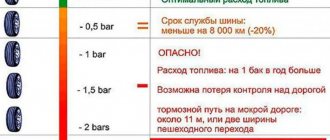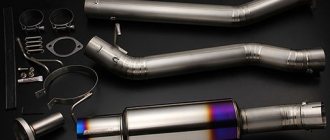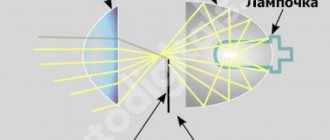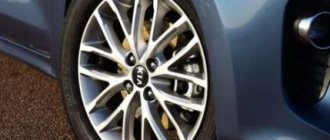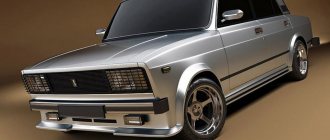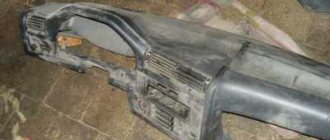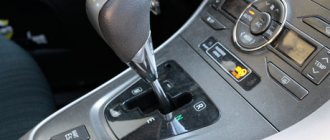There is a lot of debate online about whether a tube is installed in a tubeless tire and what the consequences of repair are. Some users claim that in this case the car behaves unpredictably. Others insist that the repair method is acceptable. Experts are also divided into two camps. On the one hand, installing such a wheel will cause damage to the car. Opponents don't see anything wrong.
Before drawing conclusions and making a decision, it is necessary to carefully weigh all the advantages and disadvantages of the procedure.
Installing a camera in a tubeless tire: pros and cons
The procedure has clear pros and cons that indicate the feasibility of repair. Advantages.
- If a tire goes flat due to an uneven rim edge or sand at the joint, the tube will maintain pressure normally.
- If the seal of the cylinder is broken (cracks in the discs, pores or punctures that do not heal), an additional rubber cylinder will hold the air inside.
- Riding on such a design is more comfortable than on a dokatka. This makes it possible to use it as a spare tire.
Flaws.
- Tubeless rims are designed for wide nipples. When installing the camera, you need to mount an additional insert or the nipple will tear out.
- The unsprung weight of the vehicle increases. The additional weight of the wheel negatively affects the durability of the bearings, arms and ball joints. Shock absorbers also wear out faster.
- The inner part of the tubeless is characterized by a reduced cylinder size. Due to the limited space, the camera does not expand completely. There are also ribbed parts here. The inserts rub the surface of the camera.
- Air-filled cavities form between the tire body and the tube. Bubbles migrate, which throws off the balance and interferes with the car's handling. The result is uneven wear and possible vibrations in the steering wheel.
- Possibility of disassembly when entering turns at high speeds.
Thus, as an emergency option, the method is suitable for carefully covering 100-200 km. With constant use, it is recommended to change the wheel.
Hernia on the wheel, will a camera help?
What I definitely wouldn’t do is repair a hernia, or what’s also called a “bump,” with a chamber!
We talked about why it comes out here , in short, the lower metal and fabric cord of the wheel, which holds the rubber, breaks and the pressure simply bursts the tire in this situation. THIS MEANS SHE CAN BREAK OUT AT ANY MOMENT! And believe me, you can’t do anything with a camera - 100%! If the lump bursts, the chamber will burst immediately, it will not be able to withstand the pressure inside, because it does not have reinforcing elements - IT WILL BURST LIKE A BALL.
Restore your rims, maybe you just need to paint them or just clean the mounting area. If it doesn’t help and there was a blow, BETTER THINK ABOUT REPLACEMENT, WHEELS ARE NOT THE SAVINGS!
That's all, yours sincere AUTOBLOGGER.
Similar news
- GISLAVED NORD FROST 200, 100 and 5. My detailed review of three tires...
- Low profile tires pros and cons. Photo and video material, and...
- Discs 13 or 14
Add a comment Cancel reply
Installing a camera in a tire yourself
Self-installation in a tubeless camera is done like this.
- Disassemble the old set.
- Remove the nipple from the socket.
- From inside the tire, remove all inserts, stickers and elements that could damage the rubber.
- Fill the camera into the cylinder.
- Secure the nipple from falling through.
- Seal the wheel.
To eliminate the air bubble, some experts recommend slowly inflating the slope and at the same time lowering the nipple slightly into the socket.
The technique is relevant for all wheels, regardless of size, be it 14, 15 or r16.
Is it possible to put a tube in a tubeless tire on a cast wheel?
Installing a camera in a modern cylinder on an alloy wheel is unacceptable. The exception is the need for short-term rolling within 200 km. or use as a spare tire.
The need may be caused by damage to the rim or tire itself. The leak is corrected by inserting an independent pressure-holding cylinder.
Is it possible to put a tube in a tubeless tire with a side cut?
While receiving a side cut, some motorists place their tubeless tubes inside and continue driving. Whether it is possible to repair rubber in this way depends on the case.
If the slot is wide, the chamber can be squeezed out by internal pressure. This may cause the wheel to explode while driving. Simultaneously with the application of the “fur coat” - the reinforcing element, the operation of the cameras is possible.
Installing a tubeless tire on a regular rim
Modern discs are equipped with special annular protrusions - humps. The parts are designed to hold the tire cord pressed.
If the tire continues to be used, due to the absence of a retaining element, it will quickly be torn off its seat.
Will a camera help if there is a hernia on the wheel?
The formation of a hernia on a tire indicates damage to the inner layer of the cord. If the fabric or metal base is destroyed, further use of the product is strictly not recommended.
The same applies to installing a camera in a damaged tire. The additional insert does not have a reinforcing layer. The soft camera stretches greatly, which makes its installation useless.
Constantly flat tire, nothing helps: what to do
Typically, tubeless tires can go flat in three ways.
- Damage to the internal sealing layer. Each tire has a special soft layer on the underside. When the slope is punctured, the layer quickly heals the damage, which minimizes air loss.
- Damage to the sealing rim on the slope or the edge of the rim. The main sealing element is the joint between the tire and the wheel. When the wheels hit, the edges often bend, which leads to depressurization of the joint.
- The age of the discs plays an important role. Peeling or cracking paint also allows air to leak.
If there are no obvious punctures, you should pay attention to the above factors or install a regular camera inside.
Why is the camera contraindicated?
This is not recommended at all; you can only try it if absolutely necessary. If you decide to experiment, then you immediately need to prepare for several troubles that may await you on the road.
The fact is that a tubeless tire should structurally work without any layers inside. It has soft sidewalls that perform their functions only with uniform pressure inside the rubber. The tire then fits tightly to the disc, grips it with its edges and, with the help of a sealant, sticks to it under the influence of friction forces.
But if you put a foreign layer in there, the tire will work differently. Although the rubber tube stretches, in any case it does not fit tightly around the tire from the inside. The pressure on the edges is different. As a result, the rubber becomes deformed and does not compress well from the sides. At high speeds, it handles bumps as necessary. The car receives microplay, noticeable during active taxiing. As a result, uneven tread wear begins due to bending of the rubber. But this is not the worst thing.
It’s worse when a tire with a camera inside, due to a lack of pressing force, breaks off and is dismantled during sudden braking or maneuvering. And this threatens a sharp loss of controllability. And then - depending on your luck.
In addition, an air gap in the form of a bubble is guaranteed to form between the tire and the tube when inflated by the pump. At speed, such a blister moves inside the wheel and causes imbalance. The wheel beats and gets hot, the steering wheel vibrates. Driving becomes not only dangerous, but also unpleasant.
Question answer
How to properly store summer tires in winter?
How to install a valve for tubeless tires
The standard procedure for installing a tubeless nipple on a wheel involves the use of a special device. The photo shows the nipple key of the jtc 3926 model:
The procedure looks like this:
- unscrew the valve from the new nipple;
- insert it from the inside of the disk;
- install the support device;
- Using the key as a lever, pull the nipple through the hole in the rim.
If everything is done correctly, the spool will fall into place and air will be etched from the contact point.
When they put a camera in the wheel
Installing a camera in a tubeless wheel is justified only in cases where there is no other option.
Disc wear
The steel rim wrinkles easily and shows signs of corrosion. As a result, this leads to the appearance of places from which air is poisoned. The only way to correct the situation is to buy a new disk. However, if there is no money at the moment, a camera is installed. It is important that only one type of camera is present on one axis. In other words, if a camera had to be installed in the front left one, then the same procedure is performed with the front right one.
Microcracks on titanium discs
Such wheels do not bend, but falling into a hole can lead to the appearance of small cracks through which air will escape.
Poor painting of the inside of the disc
Over time, the paint begins to peel and come off, which impairs the seal.
Severe tire puncture
If you run into the glass, you can severely tear the rubber, and a regular patch will not save you in this case. Installing a camera allows you to ride carefully on a damaged tire for some time.
Herniation
A strong impact of the wheel, which leads to damage to the metal cord, makes the tire unsuitable for further use. To slightly delay the time of buying new tires, tire service workers put special protection inside the tire and install a tube.
How to tell if a tire is tubed or tubeless?
1) According to the marking on the side surface of the tire, if there is the word TUBLESS, then the tire is tubeless, if there is no or there are the words TUBE or TUBE TYPE, then the tire is tubed.
Interesting materials:
Where is the wheel width indicated? Gpt system disk what is it? The disk has disappeared, how can I get it back? How to safely remove an external hard drive? How to quickly clear Yandex disk? How often should you change rear brake discs? How often can you format an SSD drive? How to clean ssd disk from debris? How to add a hard drive? How long do alloy wheels last?
It goes down, nothing can be done
However, there are times when a tubeless tire goes flat, and no matter what you do, it won’t stop!
This mainly occurs due to damage to the wheel rim. Let's say you flew into a hole and dented a (stamped) disc, they straightened it out for you, but some unevenness may remain, the tire will not fit tightly and will leak air, albeit not quickly, but the next day minus 0.3 atmospheres, possibly more.
With cast and forged wheels it is even more difficult; if you fall into a hole, they can simply burst, or microcracks will appear through which the wheel will go flat. Of course, it is possible to straighten and solder them, but it is difficult and not always worth doing, because the structure of the disk is damaged (if the damage is serious), more details here .
It could also be a problem with the paint on the disc. The thing is that the varnish and paint can come off over time, swell, and again the tire does not fit tightly to the wheel. A flat tire seems trivial, but this is a common problem on used alloy wheels! They need to be cleaned and painted correctly .
Of course, the damage to the tire itself should not be written off; with strong impacts it can break (the cord itself breaks), there is no use installing any tubes here, the tire needs to be completely replaced.
There are also trivial reasons, for example, dirt (or sand) at the tire fitting where the tire is attached to the rim. Here you just need to clean the contact area.
Advantages of “tubeless”
- Tubeless tires have more than enough advantages, but the main thing is considered to be the ability to maintain normal pressure in the tire in the event of a puncture. Simply put, if you puncture a tire with a tubeless tube, then you can drive on it for more than a dozen kilometers, and if you have a car compressor, then several hundred. In addition to convenience, this advantage also provides a high degree of safety, since if the pressure in the wheel instantly drops, you can lose control and get into an accident. For example, in the event of a puncture, a tube tire almost instantly loses pressure, the reason is especially the tire and the disk; there is no strong connection between them and air under pressure leaves the tube through the puncture, as well as past the rim of the disk, after which the air goes outside through the valve hole of the rim. In the event of a puncture, a tubeless tire loses air only at the puncture site and then, as a rule, only in the event of a collision with this place. If the puncture is small, the pressure drops very slowly.
- The next advantage of a tubeless tire is weight. Tubeless tires are significantly lighter than tires with a tube, therefore the load on the suspension will be lower.
- While riding, tubeless tires generate less heat during fast and long rides.
- The increased safety and reliability of tubeless tires is beyond doubt; due to the design features and high strength of the tires, the likelihood of rapid depressurization is almost zero.
- Simple and quick repair. There are special pastes and sprays that can instantly solve the puncture problem. Compared to tube tires, the repair of which requires a lot of time and tools, even women can repair tubeless tires. This means repairs, after which you can get home or to the nearest station for a full repair.
- Tubeless tires have a longer service life, approximately 10-12%. This can be achieved due to better temperature conditions and increased heat transfer from the tire to the disk, as well as the stability of the internal air pressure in the tire and the absence of any friction between the tube and the tire.

